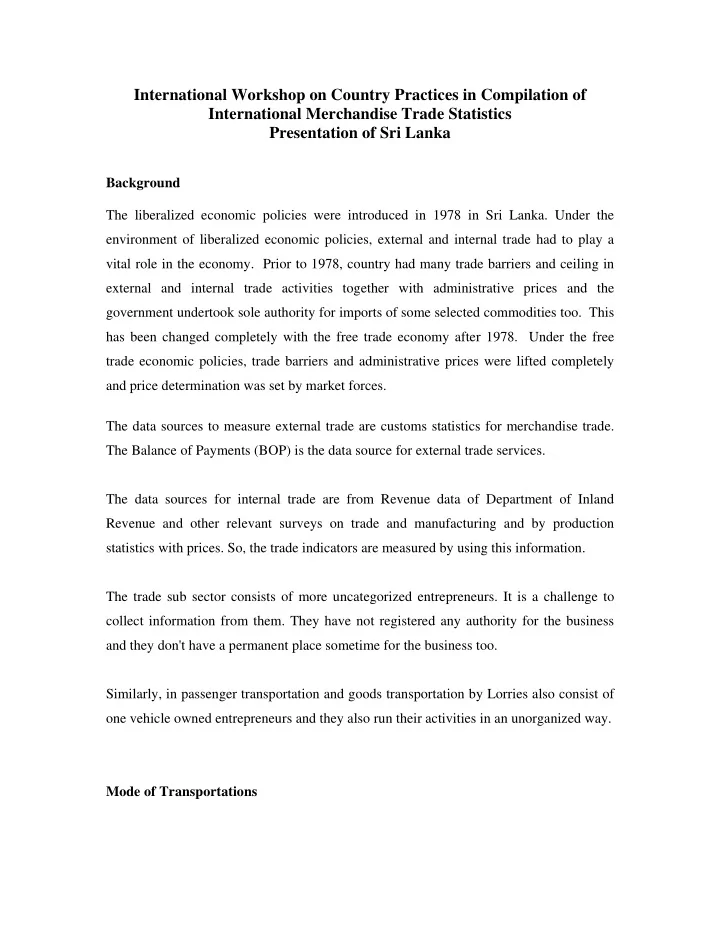

International Workshop on Country Practices in Compilation of International Merchandise Trade Statistics Presentation of Sri Lanka Background The liberalized economic policies were introduced in 1978 in Sri Lanka. Under the environment of liberalized economic policies, external and internal trade had to play a vital role in the economy. Prior to 1978, country had many trade barriers and ceiling in external and internal trade activities together with administrative prices and the government undertook sole authority for imports of some selected commodities too. This has been changed completely with the free trade economy after 1978. Under the free trade economic policies, trade barriers and administrative prices were lifted completely and price determination was set by market forces. The data sources to measure external trade are customs statistics for merchandise trade. The Balance of Payments (BOP) is the data source for external trade services. The data sources for internal trade are from Revenue data of Department of Inland Revenue and other relevant surveys on trade and manufacturing and by production statistics with prices. So, the trade indicators are measured by using this information. The trade sub sector consists of more uncategorized entrepreneurs. It is a challenge to collect information from them. They have not registered any authority for the business and they don't have a permanent place sometime for the business too. Similarly, in passenger transportation and goods transportation by Lorries also consist of one vehicle owned entrepreneurs and they also run their activities in an unorganized way. Mode of Transportations
The mode of transport could be divided as Land, Water and Air. The country’s external trade is done by ships and by air cargo transportation. The merchandise transaction mainly based on shipping lines and it is more than 95% of the total. This air cargo transportation is nearly less than 5% of the total external trade. Inland transportations is done by Lorries and railway. The goods transportation by inland water is really insignificant. Good transportation – 2005 Item Percentage Lorries 93.6 Railway 0.4 Air 1.7 Other 4.2 Total 100.0 The goods transportation by Railway, Air and Ships could be obtained from respective authorities such as Department of Railway, Air Lanka and Port Cargo Authority. The goods transportation by Lorries is based on adhoc type data collection and other proxy variables. Changes of ownership in merchandise trade transactions. Under the open economic policies, external and internal trade is also liberalized and accordingly ownership of merchandise also depends on these policies. The ownership of goods related to deference activities is under the government. The ownership of crude oil and petroleum products is under semi government authority. But very recently policies on trading and imports of petroleum products were changed and a private foreign company also engaged in this activity. Importation of flour is also kept with the government and few years back it was liberalized and given to the private sector. Few years back importation of seeds was done by the Agriculture Department and now policy
was changed and it was given to private sector too. The ownership of all the other merchandise trade and transaction belongs to the private sector.
Recommend
More recommend